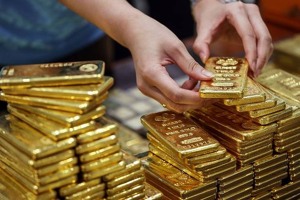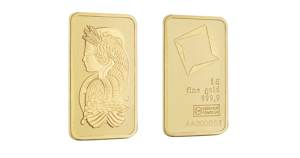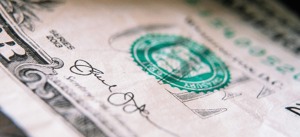Tavex uses cookies to ensure website functionality and improve your user experience. Collecting data from cookies helps us provide the best experience for you, keeps your account secure and allows us to personalise advert content. You can find out more in our cookie policy.
Please select what cookies you allow us to use
Cookies are small files of letters and digits downloaded and saved on your computer or another device (for instance, a mobile phone, a tablet) and saved in your browser while you visit a website. They can be used to track the pages you visit on the website, save the information you enter or remember your preferences such as language settings as long as you’re browsing the website.
| Cookie name | Cookie description | Cookie duration |
|---|---|---|
| tavex_cookie_consent | Stores cookie consent options selected | 60 weeks |
| tavex_customer | Tavex customer ID | 30 days |
| wp-wpml_current_language | Stores selected language | 1 day |
| AWSALB | AWS ALB sticky session cookie | 6 days |
| AWSALBCORS | AWS ALB sticky session cookie | 6 days |
| NO_CACHE | Used to disable page caching | 1 day |
| PHPSESSID | Identifier for PHP session | Session |
| latest_news | Helps to keep notifications relevant by storing the latest news shown | 29 days |
| latest_news_flash | Helps to keep notifications relevant by storing the latest news shown | 29 days |
| tavex_recently_viewed_products | List of recently viewed products | 1 day |
| tavex_compare_amount | Number of items in product comparison view | 1 day |
| Cookie name | Cookie description | Cookie duration |
|---|---|---|
| chart-widget-tab-*-*-* | Remembers last chart options (i.e currency, time period, etc) | 29 days |
| archive_layout | Stores selected product layout on category pages | 1 day |
| Cookie name | Cookie description | Cookie duration |
|---|---|---|
| cartstack.com-* | Used for tracking abandoned shopping carts | 1 year |
| _omappvp | Used by OptinMonster for determining new vs. returning visitors. Expires in 11 years | 11 years |
| _omappvs | Used by OptinMonster for determining when a new visitor becomes a returning visitor | Session |
| om* | Used by OptinMonster to track interactions with campaigns | Persistent |
| Cookie name | Cookie description | Cookie duration |
|---|---|---|
| _ga | Used to distinguish users | 2 years |
| _gid | Used to distinguish users | 24 hours |
| _ga_* | Used to persist session state | 2 years |
| _gac_* | Contains campaign related information | 90 days |
| _gat_gtag_* | Used to throttle request rate | 1 minute |
| _fbc | Facebook advertisement cookie | 2 years |
| _fbp | Facebook cookie for distinguishing unique users | 2 years |
What are International Reserves and Why Do We Have Them?

One of the most important objectives of a central bank is to manage the country’s international reserves. By managing these reserves, the central bank can ensure other it fulfils its other objectives, such as:
- Stabilising the exchange rate
- Ensuring a stable price of gold
Nonetheless, these objectives do not represent the primary reason for maintaining international reserves. The core role of international reserves is to provide financial support to a country during emergencies, such as pandemics, economic crises, and recessions.
This article will elucidate the nature of international reserves, their components, and the specific functions of the various asset classes held by central banks.
How Do We Define International Reserves?

To understand the composition of international reserves, it’s essential first to define them accurately.
International reserves consist of foreign assets that a country’s monetary authority can access and control
In essence, these reserves are akin to an investment portfolio managed by central banks, serving to validate the central bank’s authority in currency issuance. Without such reserves, central banks lack a tangible foundation to back the currencies they issue. It’s important to note that having more money does not necessarily equate to possessing more assets, nor does holding more assets automatically result in an increase in money supply.
Furthermore, the presence of these reserves can help a nation’s credibility. A country with substantial reserves is more likely to secure loans, enhancing its financial stability, economic growth, and standing in the global economy.
Which Body Regulates the Activities of the State Reserve?
The regulation and oversight of state reserves are designed to be immune to political interference, and thus, these reserves are exclusively controlled and regulated by each country’s monetary authority.
This framework ensures the political independence of monetary authorities within each nation. The safeguard that international reserves cannot be directly accessed or influenced by any political entity – be it Parliament, the Government, or the President – serves to curb the expansionist tendencies of political figures, maintaining a separation between state finance and political ambitions.
What Assets are International Reserves Made Up Of?

The composition of international reserves is determined by the Board of Directors within each central bank, under the discretion of the respective monetary authority. Generally, the types of assets included are consistent across different countries, classified as reserve assets based on criteria established by the International Monetary Fund (IMF). However, the specific allocation and selection of assets within these categories are decisions made by the monetary authorities themselves.
1) Foreign Exchange Reserves
The bulk of a country’s international reserves is often held in the form of foreign exchange reserves, which are pivotal due to their ability to offer immediate liquidity during financial crises.
China holds the distinction of possessing the largest foreign exchange reserves, amounting to $3.3 trillion as of January 2024. Over the last twenty years, China has methodically accumulated foreign currency with the strategic aim of maintaining a relatively weak yuan. By doing so, it enhances the competitiveness of its exports in the global market, fostering higher demand internationally.
2) Gold Reserves

Central banks’ precious metal gold holdings play a crucial role in underpinning the creditworthiness of both the banks themselves and their respective countries.
Due to its inherent value and global standardisation, gold stands as one of the most secure assets a monetary authority can possess
This concept has gained traction among monetary and financial institutions in recent years, with central banks making record gold purchases in both 2022 and 2023 to bolster their international reserves. Notably, China acquired 225 tonnes, Poland 130 tonnes, and Singapore 76.5 tonnes, reflecting a significant uptick in gold investment.
The United States holds the largest gold reserves, a historical accumulation given the direct tie of the US dollar’s value to gold until 1971. This relationship, known as the gold standard, was instrumental in establishing the US dollar as the international reserve currency. Consequently, the US dollar is universally accepted for global transactions and can be exchanged for any currency, solidifying its pivotal role in international finance.
At the opposite end of the spectrum, countries such as Norway, Canada, and Croatia have no gold reserves whatsoever. The reasons for this absence of gold are diverse and noteworthy. In a statement from 2019, the Bank of Canada elaborated on their stance, noting that gold is not viewed as being as liquid as U.S. Treasury assets (therefore did not partake in the the buying and selling of gold)
Since 1980, when Canada had a substantial 700 tons of gold, there has been a deliberate and gradual process of reducing gold reserves. By the early months of 2016, Canada had officially depleted its gold reserves entirely.
More on the subject here: Top 7 Countries with the Most Gold Reserves.
3) Special Withdrawal Rights (SDR)
Special Drawing Rights (SDR) are a type of reserve asset created by the International Monetary Fund (IMF) in 1969
These assets contribute to a country’s total reserves and are utilised to bolster foreign exchange holdings.
SDRs represent a claim on the foreign currency reserves of IMF member countries, effectively created “out of thin air” by the IMF. Essentially, an SDR functions like a line of credit, allowing a country with SDRs to sell them in exchange for cash. This cash corresponds to one of the five currencies that determine the SDR’s value, distributed as follows:
- The US dollar, comprising 43.48% of the SDR’s value,
- The Euro, making up 29.31%,
- The Chinese Yuan, at 12.28%,
- The Japanese yen, at 7.59%,
- The Pound sterling, at 7.44%.
Countries purchasing SDRs can hold onto them indefinitely and may even earn interest. Within this system, all countries with SDRs both pay and receive interest at the same rate, known as the SDR interest rate (SDRi).
More on the subject here: What are Special Withdrawal Rights (SDR)?
Membership Contributions to the International Monetary Fund

Upon joining the International Monetary Fund (IMF), a country is required to make an initial contribution within the first six months of membership. Additionally, as part of their ongoing participation in the IMF, member countries must make contributions that are reassessed and determined every five years.
These periodic assessments are based on updated macroeconomic data, with the contribution amount being influenced by a weighted average of four key factors:
- 50% Gross Domestic Product (GDP)
- 30% Economic openness
- 15% Economic fluctuation
- 5% International reserves
The payment structure for these contributions is bifurcated into two parts: 25% of the contribution must be paid in Special Drawing Rights (SDR) or a recognised international currency, while the remaining 75% is paid in the country’s own legal tender.
These contributions from member countries are pooled into a common fund, alongside revenues from loans provided by members with the capacity to offer financing. This collective fund serves as the primary financial resource of the International Monetary Fund.
Financial Assets as International Reserves

The primary categories of international reserves – currency, gold, and the IMF current account – are essential for providing liquidity to countries during emergencies. In times of urgent need, such as during pandemics, military conflicts, or natural disasters, countries require immediate access to funds, a need that certain financial assets cannot fulfill due to their lack of instant liquidity.
Nonetheless, to ensure a diversified reserve portfolio, many central banks invest in financial assets that do not offer immediate cash conversion. This strategy is employed because these assets, which can include bonds issued by foreign governments or shares in multinational corporations, often generate income through coupons or dividends. Moreover, they offer a secure means of diversification. This means if the value of one asset class declines, other components of the reserve assets can provide compensatory value, maintaining overall financial stability.
Take, for instance, the United States, which, as of May 2023, owed $7.3 trillion to foreign creditors, part of its total debt of $31.4 trillion. The countries holding the largest U.S. debt obligations include:
- Japan with $1.1 trillion,
- China with $867 billion,
- Great Britain with $655 billion,
- Belgium with $354 billion,
- Luxembourg with $329 billion.
These bonds are a source of steady income for the lenders, especially significant given the interest rate increases over the past two years, which have enhanced these earnings, much to the concern of American debtors.
In addition to the assets mentioned, the financial instruments considered part of international reserves include:
- Short-term loans to corporations that do not primarily offer deposit accounts,
- Long-term loans to IMF Trust Accounts,
- Securities obtained through repurchase agreements, where central banks lend to commercial banks against collateral,
- Funds from reverse repurchase transactions, wherein commercial banks repurchase previously offered collateral,
- Financial derivatives, provided they conform to the regulations of the monetary authority.
The varied composition of these assets enables central banks to maintain a portfolio that not only assures liquidity but also generates returns in the face of financial adversities such as banking panics, crises, or inflation.
Functions of International Reserves
International reserves can be likened to an investment portfolio. However, the primary objective of these government-held reserves is not to maximise returns but to offer financial support during times of crisis.
| Asset Class | The Degree of Risk | Yield | The Degree of Liquidity |
| Currency | Low | Low | Picked Up |
| Gold | Low | Environment | Picked Up |
| Actions | Environment | Picked Up | Environment |
| Bonds | Low | Low | Environment |
| Property | Low | Environment | Low |
From foreign exchange reserves and gold to stocks, bonds, and even real estate, each asset within the reserves carries its own level of risk, return, and liquidity. Unlike a typical investor seeking profit, the goal here is to maintain a balanced and accessible reserve that can provide stability and support when it’s most needed.
Key Takeaways on International Reserves
- The economy is widely understood to be cyclical, with each economic cycle spanning approximately a decade. During this period, the economy experiences growth, peaks, and inevitably enters a phase of crisis or recession.
- Given the cyclical nature of economies and the preference of authorities to maintain investment portfolios rather than addressing the root causes of economic cyclicality, it prompts significant reflection. These portfolios, known as international reserves, are designed to ensure an economy can navigate through unforeseen challenges.
- While the accumulation of reserves is undoubtedly essential for economic stability, the rationale behind their accumulation – namely, to buffer against the economic cycle – misses the mark.
- Often, the underlying issue stems from centralised interventions in financial markets, where an influx of liquidity (inflation) is introduced in an attempt to mitigate crisis impacts. Contrary to intentions, this approach frequently exacerbates the situation.


















